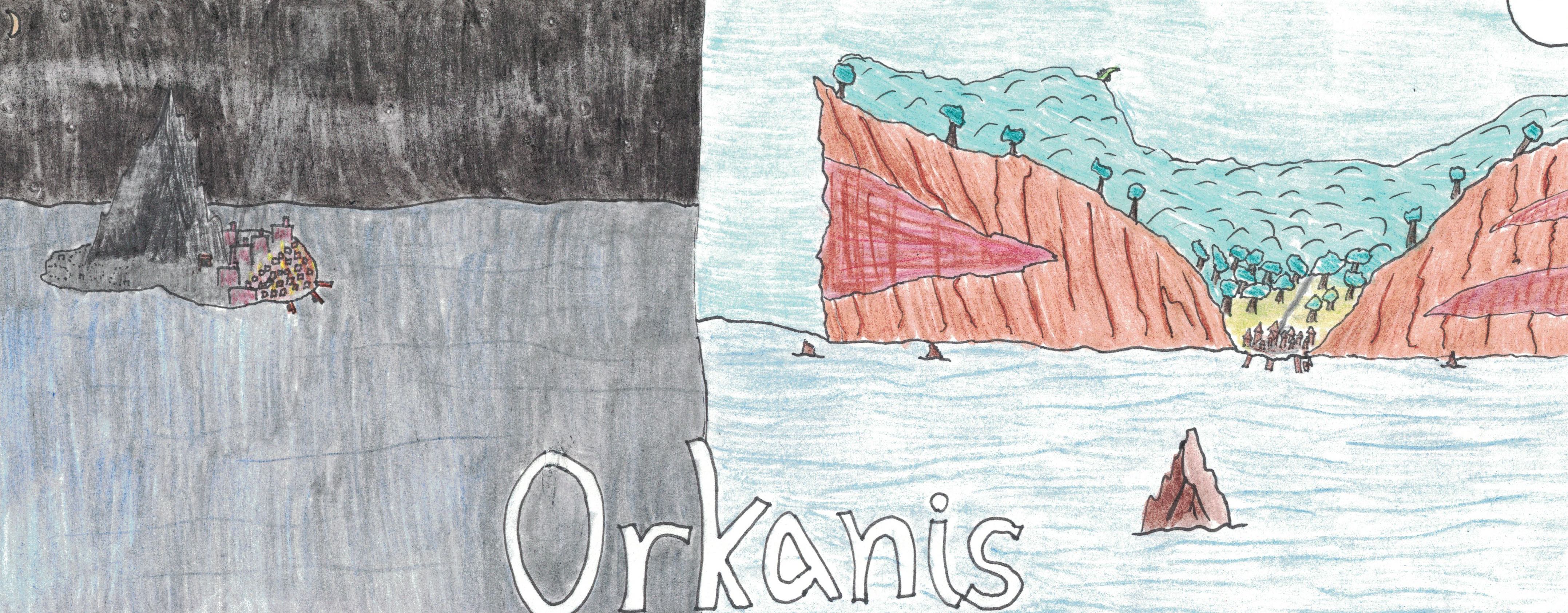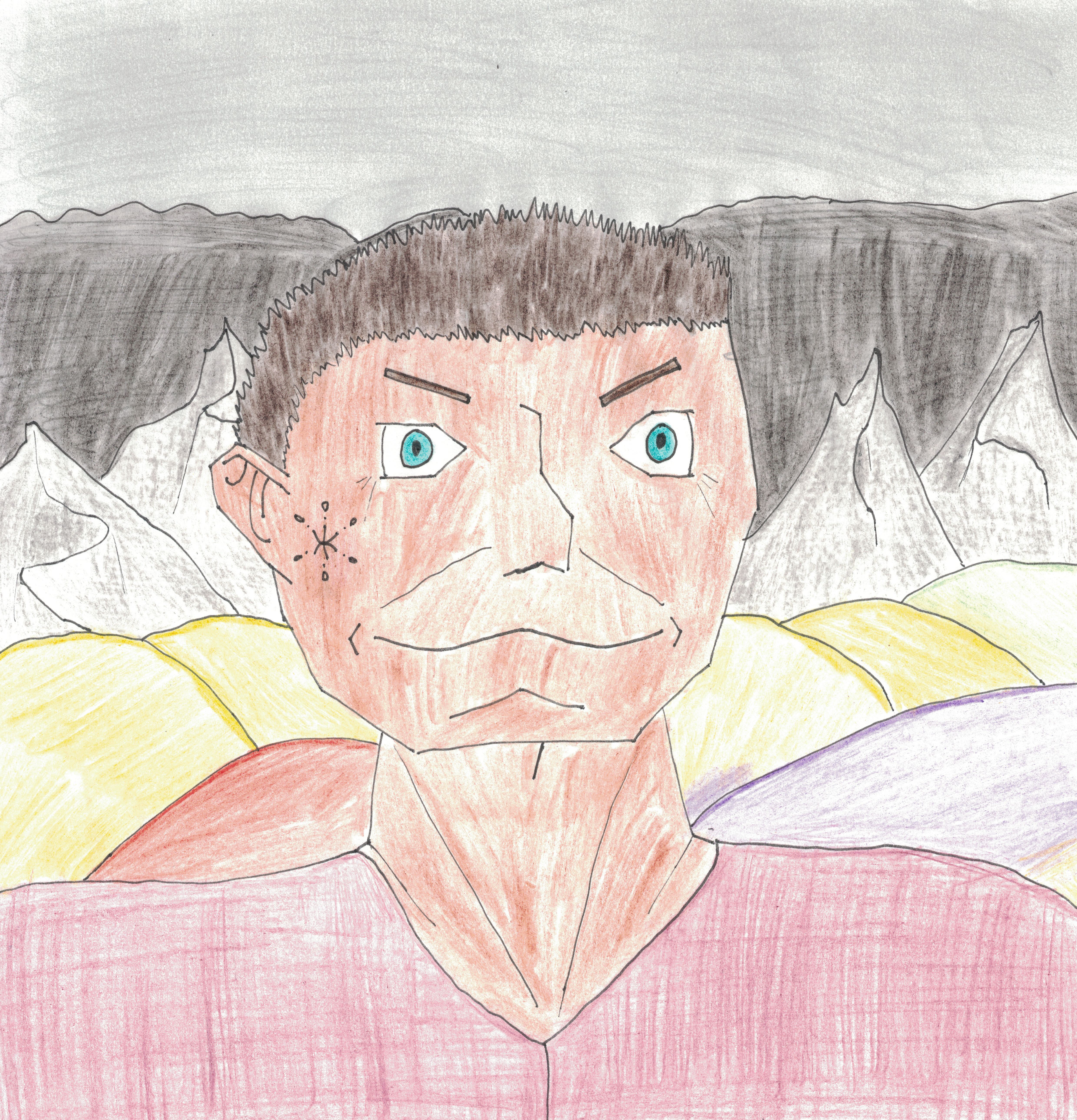Darukhasi
In the centre of this desert was a few square buildings, made out of a swirl of bright colours. Wandering around, dazed and confused, were several people, the likes of whom I have never seen. Some looked to be made out of fire, their hair aflame and their skin a charcoal black. Another was pale of skin, and small clouds of dust went up wherever they went. They were dressed in strange attire. After a moment, one of them, with blue skin and glistening with sweat, came towards me holding a tome in one hand and a gesture of peace in the other. He waved his hands in a sweeping gesture and then, in an accentless voice, said, "I do not know where we are, friend, but I doubt that our magicks worked if we are here." That is when I realized that these people must be from another world. ~An account of the Arrival as witnessed by a captain of the guard in the village of Kwimbela
Appearance and Types
The darukhasi come in a variety of different forms depending on which element is dominant in their blood. Some bloodlines favour a specific kind of darukhasi, while others have an even mixture of types:- Air (koridh): Darukhasi of the air type have pale skin, anywhere from a tanned olive to a stark white. Their eyes are pale grey or pure black. Their hair is usually a light blue or a darker hue of the their skin colour. As they walk, they often kick up dust and light objects due to the constant breeze around them.
- Fire (eramidh): The fire darukhasi have black or dark grey skin, filled with many large reddish-orange scar-like cracks. They have orange or red eyes, like burning coals. Their hair is not actually made of flames, but it is rather red or orange and warm to the touch. They give off a lot of body heat, and the heat of the desert doesn't bother them at all.
- Earth (thïthidh): An earth darukhasi have a variety of skin colours, with some have dark grey, brown, ochre or other rock-like colours. Their eyes are blue or green commonly. Most earth darukhasi have no hair or have very short hair of dark-brown or black. They are incredibly heavy and stronger than the average darukhasi.
- Water (vöthidh): Water darukhasi have blue skin, occasionally a darker blue or a sea-green colour. They have white eyes with no discernible pupils. Their hair is commonly white or blond, although very rarely water darukhasi with green hair have been seen. Water darukhasi can breathe underwater and are often more dextrous than the average darukhasi.
Civilization and Culture
Major Organizations
The Gospel of Ro is the main religious organization among the darukhasi, dedicated to their creator god Ro. They are also responsible for the high rate of literacy among the darukhasi, as they teach writing to many young children.
The darukhasi kingdom is no more, but its people have become well-integrated into the political landscapes of the nations they now inhabit.
Beauty Ideals
A beautiful darukhasi is one who has embraced their elemental nature and curated it into a form that is aesthetically pleasing. A fire darukhasi, for instance, might sculpt their flame-like hair into straight lines or carefully shape their cracked skin into straight lines or geometric shapes. Gender rarely factors into beauty, with the darukhasi mostly referring to it for the purposes of language or for procreation.
Common Customs, Traditions and Rituals
Every town and village of the darukhasi has a Keeper of Clan Knowledge who recites the histories of the town and reminds people of observed traditions. Being named a Keeper of Clan Knowledge is an incredible honour among the darukhasi, and anyone with that title receives a great deal of respect.
History
Before the Arrival, the darukhasi and the urukani lived on their own world, which the darukhasi called Akbir. Their world was a land of dust and multicoloured sand, where the two races fought a centuries-long war for dominion over the few sources of fresh water. Their nations were mighty in terms of knowledge and military might, and they were constantly searching for ways to destroy each other.
One day, a darukhasi mage whose name has been lost or forgotten discovered a ritual spell so powerful it would wipe out the entire urukani race in a single moment. In an attempt to end the war, this mage cast the ritual, but it was too powerful and only partially effective. The remaining energy backfired, and huge portions of Akbir were sent through the vastness of the void to Orkanis.
Such was the Arrival, as in one night darukhasi villages and towns found themselves scattered across the face of the world. The peoples of Orkanis awoke to find darukhasi wandering the deserts and forests of their world, dazed and confused from their journey. The multicoloured sand of Akbir appeared in random locales, adding bright colour to the landscape.
Studious as they were, the darukhasi mages and scholars were unable to piece together what horrible magic had brought them here, and how they might reverse it. Many mages are still studying the event in the vain hopes of undoing some of what has transpired. The darukhasi meanwhile have integrated into the societies of Orkanis, where it appears that they are stuck for good.
Historical Figures
The famous philosopher and writer Mëtri Akkhanu was a darukhasi, and many of his people know his name. Other members of this race have become knowledgeable mages, advisors and councillors to the leaders of many nations of Sedesta.
Each town and village has its own list (no matter how small) of local heroes and important figures. The names of these people are often recited on a day known as Heroes' Day.
Interspecies Relations and Assumptions
The Arrival may have brought the war between the darukhasi and the urukani to an end, but they still have many tensions that remain unsolved. The separation of their villages by the Arrival and the Sedestan nations derision of the urukani means they, thankfully, rarely meet.
As a general rule, the native peoples of Orkanis treat the darukhasi as one of their own, praising their intellectual pursuits and colourful culture. Some find them a little bit stubborn or hot-headed, but most people have a positive outlook overall.
Lifespan
75-80 years.
Average Height
1.5-1.8 metres tall.
Average Weight
60-80 kg
Naming Traditions
Male names: Amdö, Bakö, Dogäth, Elkaf, Eltïdh, Foto, Ghir, Koro, Mëtri, Nakïdh, Omer, Röthe, Undër, Vikhar, Vöthe. Female names: Aithat, Berkït, Dhïra, Ëlamit, Eladrag, Fadat, Galit, Godhët, Kësa, Mineta, Pörot, Rüdhet, Thïta, Urtül, VötaLanguages
Darukhan is the complex language of the darukhasi, but most darukhasi learn the local tepilar language as well.Common Dress and Clothing
The heat of the darukhasi homeland meant that many wore thin bright robes and trousers. Hats were very rare and are still uncommon, as hair is highly prized.Geographic Distribution
The Arrival meant that the darukhasi were scattered all across the face of Orkanis, so a village or town of them is not uncommon not matter what region one searches. However, many of them do congregate in the major cities of the world so they can be closer to one another and to their culture, as well as to the knowledge that might lead them back home.Remove these ads. Join the Worldbuilders Guild




Comments